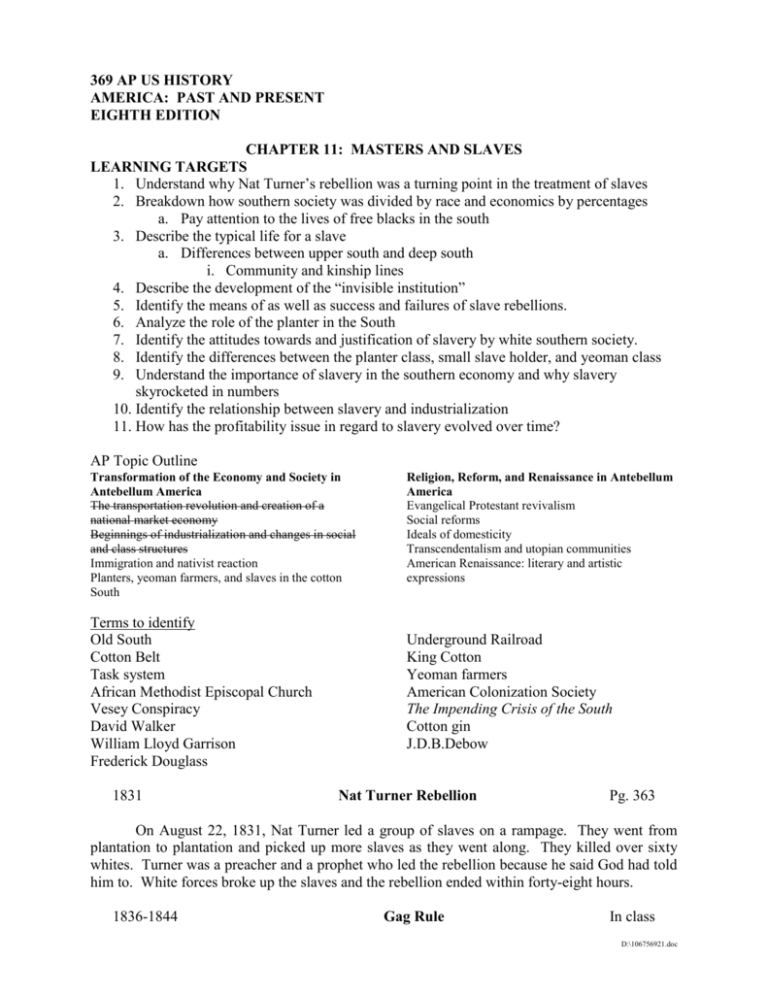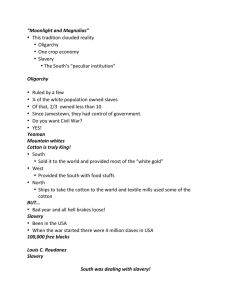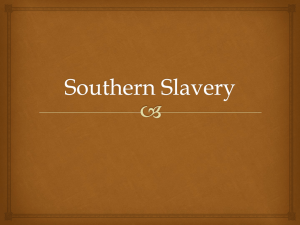Ch 13-1
advertisement

369 AP US HISTORY AMERICA: PAST AND PRESENT EIGHTH EDITION CHAPTER 11: MASTERS AND SLAVES LEARNING TARGETS 1. Understand why Nat Turner’s rebellion was a turning point in the treatment of slaves 2. Breakdown how southern society was divided by race and economics by percentages a. Pay attention to the lives of free blacks in the south 3. Describe the typical life for a slave a. Differences between upper south and deep south i. Community and kinship lines 4. Describe the development of the “invisible institution” 5. Identify the means of as well as success and failures of slave rebellions. 6. Analyze the role of the planter in the South 7. Identify the attitudes towards and justification of slavery by white southern society. 8. Identify the differences between the planter class, small slave holder, and yeoman class 9. Understand the importance of slavery in the southern economy and why slavery skyrocketed in numbers 10. Identify the relationship between slavery and industrialization 11. How has the profitability issue in regard to slavery evolved over time? AP Topic Outline Transformation of the Economy and Society in Antebellum America The transportation revolution and creation of a national market economy Beginnings of industrialization and changes in social and class structures Immigration and nativist reaction Planters, yeoman farmers, and slaves in the cotton South Terms to identify Old South Cotton Belt Task system African Methodist Episcopal Church Vesey Conspiracy David Walker William Lloyd Garrison Frederick Douglass 1831 Religion, Reform, and Renaissance in Antebellum America Evangelical Protestant revivalism Social reforms Ideals of domesticity Transcendentalism and utopian communities American Renaissance: literary and artistic expressions Underground Railroad King Cotton Yeoman farmers American Colonization Society The Impending Crisis of the South Cotton gin J.D.B.Debow Nat Turner Rebellion Pg. 363 On August 22, 1831, Nat Turner led a group of slaves on a rampage. They went from plantation to plantation and picked up more slaves as they went along. They killed over sixty whites. Turner was a preacher and a prophet who led the rebellion because he said God had told him to. White forces broke up the slaves and the rebellion ended within forty-eight hours. 1836-1844 Gag Rule In class D:\106756921.doc











